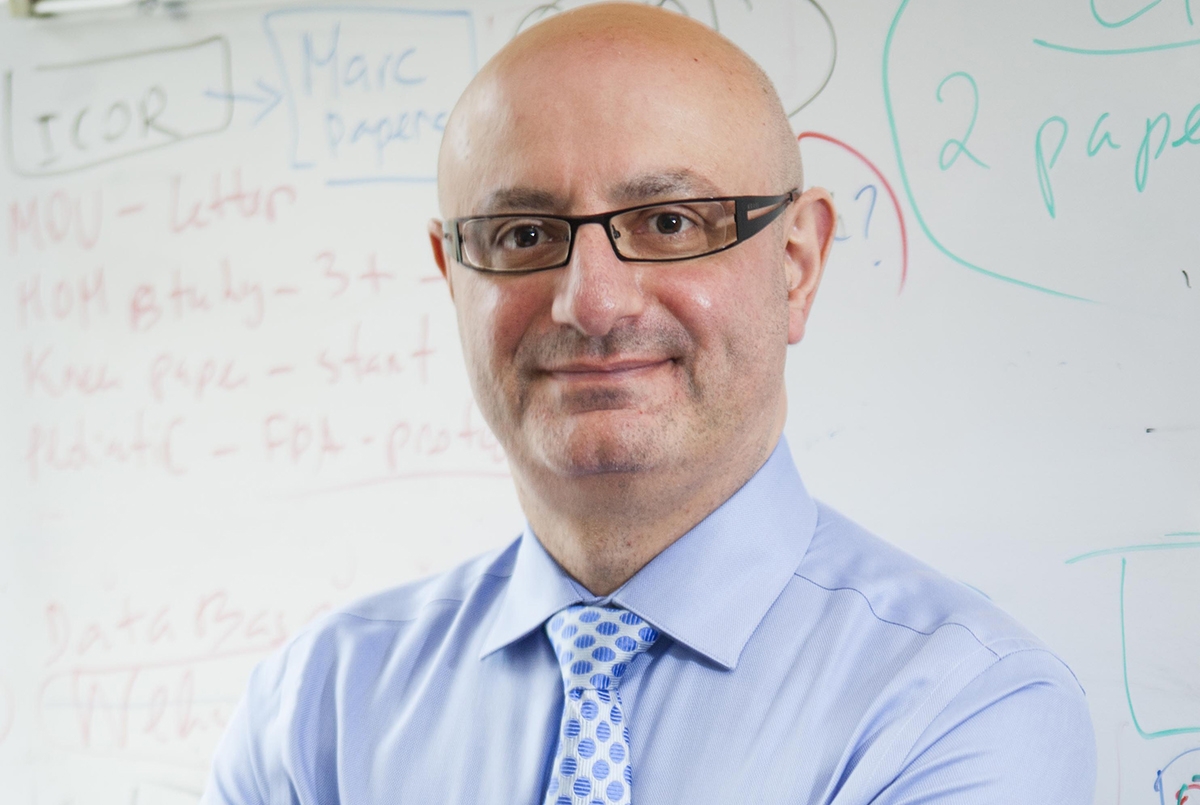Analysis Comparing Implants With Various Metal, Ceramic and Polyethylene Combinations Shows Equivalent Effectiveness While Presenting Evidence of Safety Concerns Associated With Metal-on-Metal Implants
NEW YORK (Nov. 29, 2011) — More than 270,000 Americans get hip replacement surgeries every year — a number that is projected to double in the next decade as the population ages. With various options for implants, including metal-on-polyethylene, metal-on-metal and ceramic-on-ceramic, there have been questions about which kind works best.
A new FDA-funded data analysis, the first of its kind, has found no clear advantage of one implant type over another in terms of effectiveness but presented evidence of a potential for harm associated with metal-on-metal implants. Results are published in the Dec. 1 edition of the journal BMJ.
"While hip replacement surgery has helped millions of Americans with painful arthritis or joint damage, substantial number of these implants require revision surgery due to infection, wear, dislocation, instability or other mechanical failures," says the study's first author, Dr. Art Sedrakyan, director of the Patient-Centered Comparative Effectiveness Program and associate professor of public health at Weill Cornell Medical College.
In hip replacement surgery, the hip joint is replaced with an artificial implant. When the surgery was first introduced in the 1940s, surgeons used metal-on-metal implants that have become popular in the last decade. Implants made of a metal head and polyethylene socket were introduced in the 1960s, followed by ceramic-on-ceramic implants in the 1990s.
In the new paper, Dr. Sedrakyan and his co-authors examined records of 3,139 patients and 3,404 hips enrolled in 18 comparative studies and more than 830,000 surgeries in national registries, comparing device effectiveness and quality of life.
While their overall results show no clear advantage, the authors report that the data are complex. While one clinical study reported fewer joint dislocations associated with metal-on-metal (M-M) implants, there was evidence of a greater risk for implant revision procedures associated with M-M implants in three of the largest national registries (including more than 700,000 patients) when compared with metal-on-polyethylene (M-P). And while one trial reported fewer revisions with ceramic-on-ceramic (C-C) as compared with M-P implants, data from national registries did not support this finding.
"Before any claims of benefit are made, there should be large, peer-reviewed clinical trials comparing these treatments. Until then, national registries provide important real-world data that is critical for the safety and future comparative safety and effectiveness evaluation," says Dr. Sedrakyan.
There has been highly publicized evidence of metallosis (accumulation of metal ions in the tissues) related to M-M implants. The current analysis did not summarize evidence related to metal sensitivity or toxicity because, Dr. Sedrakyan explains, its clinical relevance and implications on quality of life are in a process of being established.
The authors write that there were limitations to their analysis stemming from differences in methodology and reporting between registries. "Because these registries are not harmonized, our results are tentative and represent an indication of what we hope to be a much more complete picture," says Dr. Sedrakyan.
To address this issue, the U.S. Food and Drug Administration Center for Devices and Radiologic Health recently initiated the International Consortium of Orthopaedic Registries to improve the safety and effectiveness of orthopaedic devices and procedures through collaboration. The Consortium will be led by more than 10 national registries that currently have information on millions of orthopedic surgeries capturing all implantable devices on the market.
Dr. Sedrakyan has simultaneously held visiting professor and senior adviser appointments at the FDA's Office of Surveillance and Biometrics at the Center for Devices and Radiological Health while working on this study. Additional authors include Sharon-Lise T. Normand, Harvard Medical School and Harvard School of Public Health, Boston; Stephan Dabic, Danica Marinac-Dabic and Samantha Jacobs, Office of Surveillance and Biometrics, Center for Devices and Radiological Health, FDA, Silver Spring, Md.; and Stephen Graves, University of Melbourne and the Australian Orthopaedic Association's National Joint Replacement Registry in Adelaide, Australia.
Weill Cornell Medical College
Weill Cornell Medical College, Cornell University's medical school located in New York City, is committed to excellence in research, teaching, patient care and the advancement of the art and science of medicine, locally, nationally and globally. Physicians and scientists of Weill Cornell Medical College are engaged in cutting-edge research from bench to bedside, aimed at unlocking mysteries of the human body in health and sickness and toward developing new treatments and prevention strategies. In its commitment to global health and education, Weill Cornell has a strong presence in places such as Qatar, Tanzania, Haiti, Brazil, Austria and Turkey. Through the historic Weill Cornell Medical College in Qatar, Cornell University is the first in the U.S. to offer a M.D. degree overseas. Weill Cornell is the birthplace of many medical advances — including the development of the Pap test for cervical cancer, the synthesis of penicillin, the first successful embryo-biopsy pregnancy and birth in the U.S., the first clinical trial of gene therapy for Parkinson's disease, and most recently, the world's first successful use of deep brain stimulation to treat a minimally conscious brain-injured patient. Weill Cornell Medical College is affiliated with NewYork-Presbyterian Hospital, where its faculty provides comprehensive patient care at NewYork-Presbyterian Hospital/Weill Cornell Medical Center. The Medical College is also affiliated with the Methodist Hospital in Houston. For more information, visit weill.cornell.edu.
Takla Boujaoude
tab2016@med.cornell.edu

